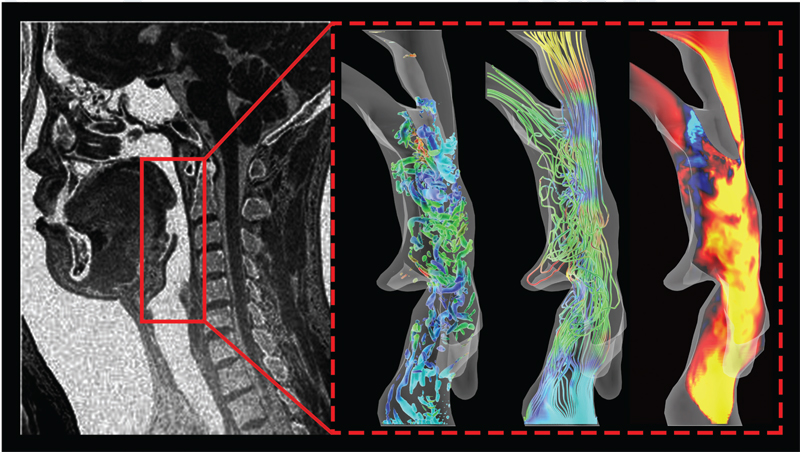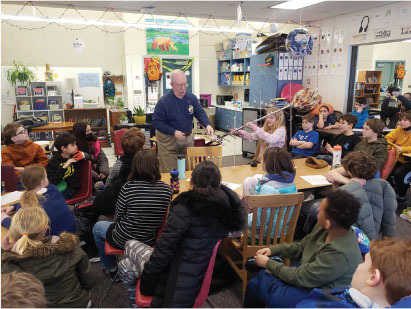July/August 2019
Variables
Engineering a Better Night’s Sleep
 HAIBO DONG, A UNIVERSITY OF VIRGINIA ASSOCIATE PROFESSOR OF MECHANICAL AND AEROSPACE ENGINEERING, IS HOPING TO GENERATE NEW SOLUTIONS FOR SNORING AND SLEEP APNEA. CREDIT: UNIVERSITY OF VIRGINIA
HAIBO DONG, A UNIVERSITY OF VIRGINIA ASSOCIATE PROFESSOR OF MECHANICAL AND AEROSPACE ENGINEERING, IS HOPING TO GENERATE NEW SOLUTIONS FOR SNORING AND SLEEP APNEA. CREDIT: UNIVERSITY OF VIRGINIAIf you or someone in your household snores, you know it can be a major disrupter. Loss of sleep for anyone within earshot can be just the beginning of the problems. When the issue is combined with sleep apnea, which affects breathing, a host of other health problems can follow.
Current treatments, such as surgery or CPAP machines, have not proven fully effective. Now, a University of Virginia engineering researcher is putting his specialty in fluid dynamics toward the challenge. Better solutions require a better understanding of the science behind the problem, believes mechanical and aerospace engineering professor Haibo Dong.
About 22 million people nationwide suffer from sleep apnea. As the back of the tongue relaxes and blocks a person’s airway, the brain senses a lack of oxygen and wakes him or her up—often repeatedly throughout the night. As UVA’s writeup explains, that can cause issues such as heart disease, type 2 diabetes, metabolic disruptions, and drowsy driving.
Dong and Ph.D. students are using CT scans and MRIs to image the mouth, nose, and airway, and then computer modeling the actions that cause vibrations and obstructions. The aim: to find the changes in the shape of the airway that affect airflow.
The team is collaborating with colleagues such as a head and neck surgeon at the university. “This work is highly interdisciplinary and involves scientific problems in the fields of biology, physics, physiology, and engineering,” says Dong.
By modeling both normal breathing and the conditions of sleep apnea for individuals ranging in age from 8 months to 80 years old, Dong is identifying the “force reduction,” where there is not enough air volume to keep the airway open. Vibrations eventually cause the airway walls to come together and create an obstruction.
Finding those conditions could lead to better treatments, such as more effective surgery to reduce vibration or a device that could monitor breathing and intervene before airway collapse. Or, a smart bed could adjust a user’s upper body angle to keep the tongue in a position to reduce vibration.
The research findings may also apply to other conditions in which breathing is impaired, such as lung cancer and asthma, and for people with vocal cord disorders.
“This is exciting, potentially transformative research that can be applied to understanding physiological problems more broadly,” says Dong.
 VORTICES, STREAMLINES, AND VELOCITY CONTOURS OF SNORING FLOWS IN THE HUMAN PHARYNGEAL AIRWAY. RESEARCHERS HOPE THIS DATA WILL HELP THEM BETTER UNDERSTAND THE CONDITIONS CAUSING SNORING AND SLEEP APNEA. CREDIT: JUNSHI WANG (UVA), PAN HAN (UVA), AND JINXIANG XI (CALIFORNIA BAPTIST UNIVERSITY)
VORTICES, STREAMLINES, AND VELOCITY CONTOURS OF SNORING FLOWS IN THE HUMAN PHARYNGEAL AIRWAY. RESEARCHERS HOPE THIS DATA WILL HELP THEM BETTER UNDERSTAND THE CONDITIONS CAUSING SNORING AND SLEEP APNEA. CREDIT: JUNSHI WANG (UVA), PAN HAN (UVA), AND JINXIANG XI (CALIFORNIA BAPTIST UNIVERSITY)

 Volunteering at NSPE is a great opportunity to grow your professional network and connect with other leaders in the field.
Volunteering at NSPE is a great opportunity to grow your professional network and connect with other leaders in the field. The National Society of Professional Engineers (NSPE) encourages you to explore the resources to cast your vote on election day:
The National Society of Professional Engineers (NSPE) encourages you to explore the resources to cast your vote on election day:
